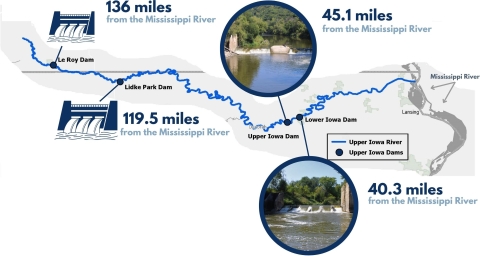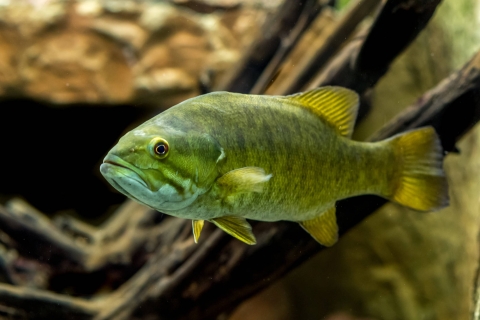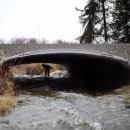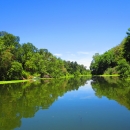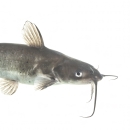The Upper Iowa River is rich with recreation
It's one of the state's most popular rivers for canoeing, kayaking, tubing, and fishing.
The Upper Iowa River offers the most public land access of all Iowa Rivers.
The Scenic River and Water Trail meanders through limestone bluffs and driftless trout streams and draws visitors from all over the country.
A river full of life
- 3 of the 64 species of fish that are found in the Upper Iowa River are game species.
- 15 different species of freshwater mussels
- Lake Sturgeon, Shovelnose Sturgeon, Freshwater Drum, Sauger, Golden Redhorse, and Walleye have the potential to move into this river for spawning in the springtime.
Fish passage is the ability of fish or other aquatic species to move freely throughout their life to find food, reproduce, and complete their natural migration cycles. Millions of barriers to fish passage across the country are fragmenting habitat and leading to species declines. The U.S. Fish and Wildlife Service's National Fish Passage Program is working to reconnect watersheds to benefit both wildlife and people.
Learn more about fish passage .
Proposed next steps
The Iowa Department of Natural Resources and the U.S. Fish and Wildlife Service are proposing to create fish passage at the Upper and Lower Iowa Dams of the Upper Iowa River near Freeport in Winneshiek County, Iowa.
Why address these dams?
Safety
Drownings have occurred at these dams due to the dangerous recirculating current they create.
Recreation
Will create 119.5 miles of contiguous Water Trail for canoeists, kayakers and tubers to the confluence with the Mississippi River.
Eliminate Repair Costs
Over a century ago these dams were used to produce hydroelectric power. Operations had ceased by the late 1950s and have degraded greatly since then. Repairing and maintaining dams that have been out of operation for decades would be very costly.
Migratory Fish
Restores over 670 mainstem and tributary miles for migratory Mississippi River fishes like Lake Sturgeon, Freshwater Drum, Walleye, Sauger, Channel Catfish, Smallmouth Bass and Redhorse.
Fishing
Restores upstream Coldwater tributary access for brook trout. Creates more habitat for smallmouth bass.
